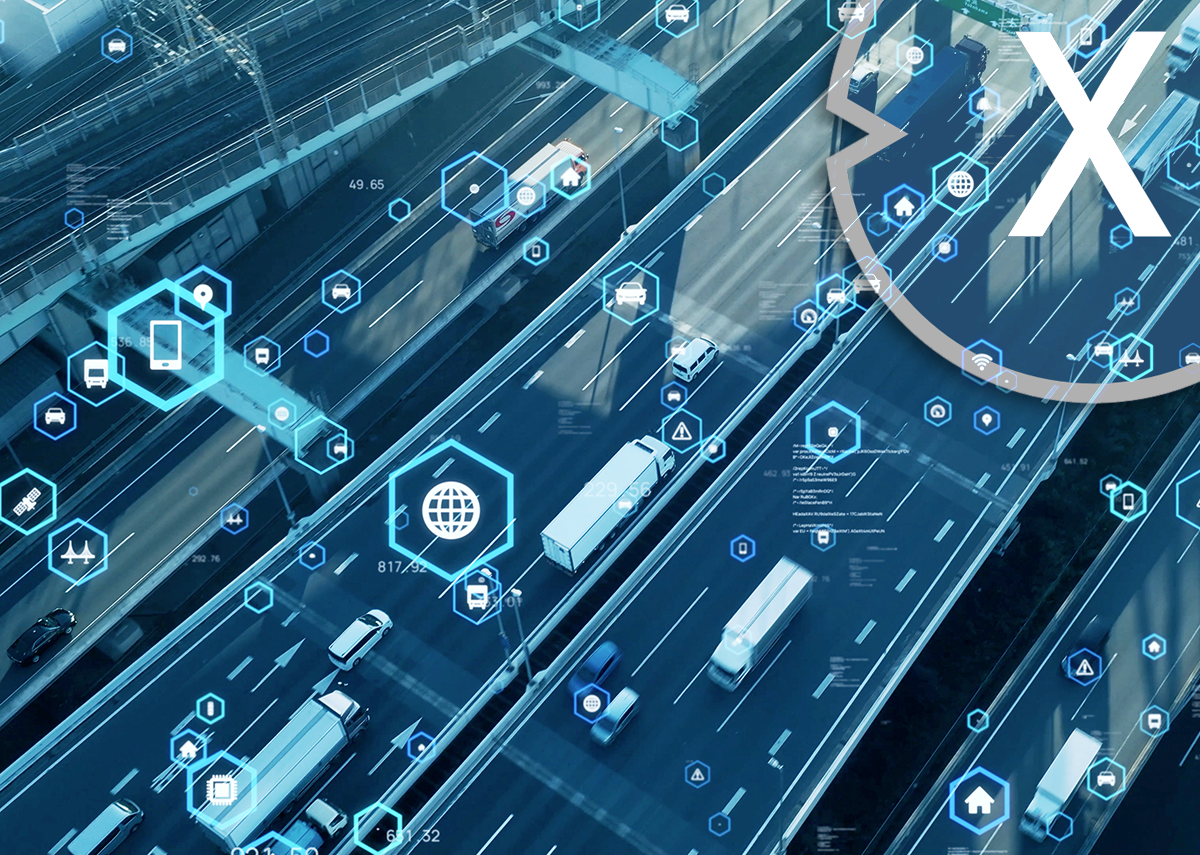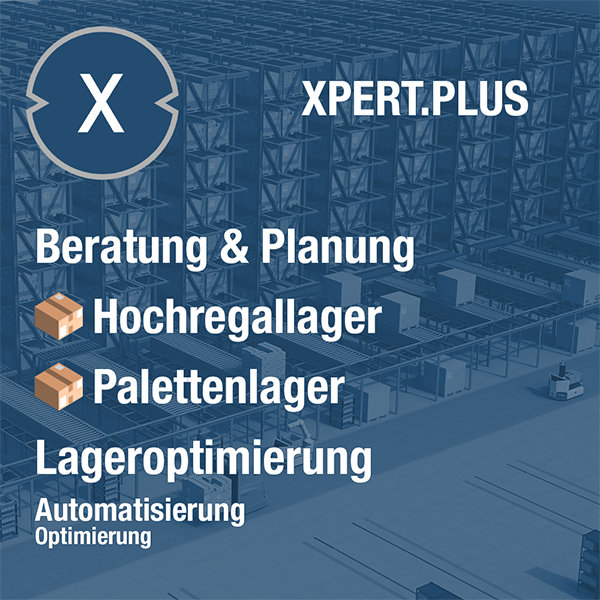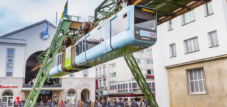How micro-hubs and micro-fulfillment logistics centers drive smart city solutions for spare parts logistics and consumer goods logistics | Metaverse
Language selection 📢
Published on: June 29, 2023 / update from: June 29, 2023 - Author: Konrad Wolfenstein

Smart City Logistics solutions with micro-hubs and micro-fulfillment logistics centers – Image: Xpert.Digital / metamorworks|Shutterstock.com
Micro Fulfillment Logistics
Micro-fulfillment logistics refers to an innovative method of order fulfillment and delivery of goods in e-commerce that uses small, localized storage and processing units. The goal of the micro-fulfillment approach is to enable quick and efficient fulfillment of online orders, especially in urban areas where space is limited.
In the traditional e-commerce model, storage and picking of goods often occurs in large central distribution centers, often located outside urban areas. The goods are then delivered to customers in larger quantities. This approach can lead to longer delivery times and higher transportation costs.
In contrast, micro-fulfillment logistics brings the warehouse closer to the customer. Smaller storage or processing units are set up in urban areas to enable faster and more efficient order processing. These units can be placed, for example, in city centers, shopping centers or even in stores themselves.
By using automation technologies such as automated storage systems, robots and sorting machines, the storage processes in the micro-fulfillment units can be optimized. Order picking and packaging are carried out more efficiently and with shorter lead times. This allows for faster processing of online orders and faster delivery to customers.
Micro-Fulfillment Logistics offers several advantages:
1. Faster delivery times
By keeping storage and processing units close to customers, orders can be processed and delivered more quickly.
2. Space saving
Using smaller units in urban areas can make efficient use of limited space.
3. Flexibility
Implementing micro-fulfillment units allows for better adaptation to demand and faster response to trends and seasonal fluctuations.
4. Improved inventory management
By locating goods in urban areas, companies can better manage inventory and optimize product availability.
5. Customer satisfaction
Faster delivery times and improved order fulfillment contribute to better customer experience and satisfaction.
➡️ Micro-Fulfillment Logistics is an emerging trend in e-commerce and brick-and-mortar retail that aims to address the challenges of today's consumer expectations for fast deliveries and a seamless shopping experience.
Micro-Fulfillment Logistics and Micro-Hubs
Micro-fulfillment logistics and micro-hubs are two related concepts in the field of logistics and e-commerce, but they address different aspects of the supply chain.
Micro-fulfillment logistics refers to e-commerce order fulfillment and delivery of goods using small, localized storage and processing units. The main goal is to enable quick and efficient fulfillment of online orders, especially in urban areas. The goods are stored in the micro-fulfillment units and from there they are picked, packaged and delivered to customers. It is therefore a concept that covers the entire order processing process from storage to delivery.
Micro-hubs, on the other hand, are special locations that serve as nodes in the logistics infrastructure. They are often placed in central or strategic locations to optimize the flow of goods and support last mile delivery. Micro-hubs can serve as transshipment points for the transfer of goods between different modes of transport, for example between large distribution centers and smaller delivery vehicles. They can also serve as interim storage facilities for consolidating goods from different sources before delivering them to final destinations.
The main difference between micro-fulfillment logistics and micro-hubs is their focus and function within the supply chain:
➡️ Micro-Fulfillment Logistics focuses on efficiently fulfilling online orders through local storage, picking and delivery of goods. It is a solution to speed up order processing and improve customer satisfaction.
➡️ Micro-hubs, on the other hand, serve as nodes in the logistics infrastructure to optimize the flow of goods and delivery. They support the consolidation, transfer and distribution of goods between different locations and modes of transport.
It is important to note that micro-fulfillment logistics and micro-hubs are not necessarily separate concepts. In fact, they can work together and complement each other to enable an efficient and fast supply chain. For example, micro-fulfillment units can be integrated into micro-hubs to enable local order processing combined with the efficient transfer of goods.
Micro Fulfillment Logistics Center
A micro fulfillment Logistics Center is a smaller, localized unit that is specially designed for the fulfillment of online orders. It is an independent warehouse and processing center, which is usually placed in urban areas. These centers are often equipped with automated technologies such as automated storage systems, robots and sorting machines in order to enable efficient order order and packaging. They act as “Dark Stores”, which are used exclusively for online order fulfillment. The orders are processed in these centers and then sent to customers for delivery. The focus is on optimizing order processing and minimizing delivery times.
Micro hubs
Micro-hubs are also smaller units, but with a slightly different purpose. They serve as a transshipment point or distribution center for goods. These hubs are often placed in urban areas near residential or commercial areas to optimize last-mile delivery. They act as interim storage for goods and enable faster and more efficient distribution to customers. Unlike micro-fulfillment logistics centers, micro-hubs can also include a variety of commodity groups and products, including consumer goods and other items that are not necessarily intended solely for online distribution. The main function of micro-hubs is to coordinate deliveries to end customers and optimize the last mile of logistics.
➡️ Micro-Fulfillment Logistics Centers are primarily specialized in fulfilling online orders and focus on efficient order processing. They serve as specialized units closely related to the e-commerce sector. Micro-hubs, on the other hand, serve as distribution centers to optimize deliveries to end customers, whether they come from online orders or other sales channels. They have wider functionality and can handle different types of goods.
The logistics technology behind micro-hubs and micro-fulfillment logistics centers - small parts conveyor technology
Automated small parts warehouses (AKL) are an important part of modern small parts conveyor technology. They enable efficient storage and quick access to small parts in various industries, including spare parts logistics and consumer goods logistics in e-commerce.
The integration of micro-fulfillment and micro-hubs into AKL systems has the potential to optimize spare parts logistics and consumer goods logistics. Micro-fulfillment refers to the use of small, local warehouse units to fulfill online orders close to consumers. By combining AKL technology with micro-fulfillment, spare parts and consumer goods can be stored in close proximity to the customer and delivered to them quickly.
The fully automated automation solutions in ASM systems help reduce costs by reducing the need for manual labor. Warehouse management and inventory turnover can be made more efficient, resulting in optimized inventory management and a reduction in errors. This in turn leads to shorter delivery times and improved customer satisfaction.
In addition, AKL systems with micro-fulfillment and micro-hubs contribute to the evolution of smart city logistics. Local storage and rapid delivery of goods in urban areas can reduce traffic congestion and emissions. The use of automated solutions also enables better utilization of resources such as storage space and vehicles.
In the e-commerce market that includes multichannel, omnichannel, unified commerce and no-line commerce, AKL systems with micro-fulfillment and micro-hubs play an important role in meeting the increasing demand for fast deliveries and a seamless shopping experience . They enable the efficient processing of orders from various sales channels and support the integration of online and offline sales channels.
Overall, automated small parts warehouses with micro-fulfillment and micro-hubs not only help reduce costs, but also increase efficiency in spare parts logistics and consumer goods logistics. At the same time, they support the development of smart and sustainable cities by reducing traffic congestion and helping to optimize logistics processes.

Xpert.Plus warehouse optimization - high-bay warehouses such as pallet warehouses consulting and planning
Basic framework for Smart City Logistics with micro-hubs and micro-fulfillment
The basis for efficient and sustainable Smart City Logistics is formed by micro-hubs and micro-fulfillment centers, which are supported by innovative technologies such as fully automated small parts warehouses (AKL) as well as further developments in sensor technology, XR technology and metaverse concepts. This combination enables revolutionizing logistics in urban areas and creates a smart ecosystem for the delivery of goods.
The fully automated small parts warehouse (AKL) plays a crucial role in Smart City Logistics. It enables the efficient storage and management of small parts, which leads to optimization of logistics processes. By using robotics, automated racking systems and advanced inventory management systems, the AKL can monitor inventory in real time and enable automated picking and packing of goods. This reduces the error rate and shortens delivery times.
The innovations in sensor technology also contribute to the further development of Smart City Logistics. Advanced sensors can be used in various aspects of logistics, such as monitoring traffic volumes, detecting environmental conditions and tracking the flow of goods. Sensors enable logistics companies to collect, analyze and use real-time data to efficiently plan deliveries, optimize routes and reduce energy consumption. Sensors can also be used to monitor storage conditions to ensure that sensitive goods are stored in optimal conditions.
XR technology (Extended Reality) and Metaverse concepts also open up new possibilities for Smart City Logistics. By using extended reality (XR), augmented reality (AR) and virtual reality (VR), logistics employees in the micro-hubs can increase the efficiency and accuracy when picking and packing goods. For example, they can use AR glasses to receive visual instructions that show them the optimal route through the warehouse and help them identify the right products. In addition, metaverse concepts based on 2D matrix codes can contribute to the seamless integration of the physical and virtual worlds. For example, customers could scan a 2D code to get detailed information about a product or to receive personalized offers and recommendations.
The combination of fully automated small parts warehouses, sensor technology, XR technology and metaverse concepts creates an intelligent and networked logistics system in smart cities. By integrating these technologies, companies can optimize their logistics processes, reduce carbon footprint and improve customer satisfaction. Smart City Logistics enables efficient and sustainable delivery of goods while at the same time relieving pressure on urban spaces and improving the quality of life.
It is exciting to see how these technologies will continue to develop and how they will shape the future of logistics in smart cities. With increasing digitalization and advancements in automation and connectivity, Smart City Logistics will undoubtedly continue to be innovative and efficient to meet the growing demands of modern urban life.
There is a lot to do now and big challenges ahead, but it will pay off in the future

Small parts conveyor technology is the key to a green and smart city – Image: Xpert.Digital / Shark_749|Shutterstock.com
Smart City Logistics is being significantly advanced by the integration of artificial intelligence (AI), the Internet of Things (IoT), sensor technology, 2D matrix codes and the constant development of metaverse strategies. These technologies play a crucial role in creating sustainable and efficient logistics solutions that are beneficial for both the population and the environment. Particularly through the use of renewable energies, what has so far been a rocky road can be rewarded in the coming years.
Artificial intelligence plays a crucial role in optimizing smart city logistics. By using algorithms and machine learning, AI can analyze large amounts of data and generate insights to improve logistics processes. For example, AI can predict traffic flows, optimize routes and reduce energy consumption. It can also help with automated job scheduling and management to ensure efficient use of resources.
The Internet of Things (IoT) enables the networking of devices and sensors in logistics. By integrating IoT devices into vehicles, packaging and storage facilities, real-time data can be collected and transmitted. This data provides valuable information about the location of goods, the condition of packaging and the utilization of vehicles. This allows logistics companies to better monitor their supply chains and identify bottlenecks to ensure smooth and efficient delivery of goods.
Sensor technology plays a crucial role in detecting and monitoring environmental conditions such as temperature, humidity and air quality. These sensors can be used in storage and transportation facilities to ensure that goods are stored and transported in optimal conditions. Continuous monitoring can prevent potential damage or loss, reducing both costs and environmental impact.
The use of 2D matrix codes enables seamless integration of the physical and digital worlds. Customers can scan these codes to access detailed product information, receive personalized offers, or leave feedback. This enables improved transparency and interaction between the actors in the logistics chain and contributes to more efficient processing of orders.
The constant development of Metaverse strategies opens up new opportunities for Smart City Logistics. The idea of the Metaverse, a virtual and connected world, enables an even closer connection between physical and digital realities. For example, this can lead to logistics processes being optimized and simulated virtually to avoid bottlenecks and maximize efficiency. In addition, metaverse concepts can improve collaboration between supply chain actors and facilitate information sharing.
The integration of renewable energies into smart city logistics is a decisive step towards sustainability and environmental protection. By using solar energy, wind power or other renewable energy sources, the negative impact of logistics on the environment can be minimized. For example, electric vehicles can run on renewable energy to reduce CO2 emissions. The use of renewable energies in logistics contributes to conserving resources and improving the quality of life in cities.
➡️ The integration of AI, IoT, sensor technology, 2D matrix codes and metaverse strategies into smart city logistics offers significant benefits for the population and the environment. By using renewable energies, a sustainable path can be taken to ensure efficient and environmentally friendly logistics. The constant development of these technologies and strategies will help Smart City Logistics become even more efficient and sustainable in the coming years.
Fully automated small parts warehouse (AKL) ideal for Smart City Logistics
Fully automated small parts warehouses (AKL) are ideal for spare parts logistics and consumer goods logistics in micro hubs or micro fulfillment logistics centers and offer optimal conditions for the smart city. In addition, this model can also be of great benefit in rural structures.
Efficient order processing
Fully automated small parts warehouses enable efficient order processing, especially for spare parts and consumer goods, which often occur in large quantities and different variants. By using robots, automated warehouse systems and advanced inventory management systems, these warehouses can enable real-time inventory tracking and ensure precise picking and packing of goods. This leads to shortened delivery times and improved customer satisfaction.
Space optimization
Fully automated small parts warehouses make optimal use of the available space. By using automated racking systems and vertical storage, these warehouses can offer high storage capacities in a small space. This is particularly beneficial for urban areas where available space is limited. In micro-hubs or micro-fulfillment logistics centers, AKLs can be integrated as compact units to enable efficient storage and distribution of goods.
Automation and technology integration
Fully automated small parts warehouses are equipped with advanced technologies that enable seamless integration into the smart city. By using sensors, Internet of Things (IoT) devices and artificial intelligence (AI), these warehouses can collect, analyze and use real-time data to optimize logistics processes. For example, you can monitor inventory, identify shortages, and automatically generate orders to maintain inventory. This leads to more efficient use of resources and a reduction in errors.
Scalability and flexibility
Fully automated small parts warehouses offer high scalability and flexibility. They can be expanded or adjusted as needed to handle growing volumes of spare parts or consumer goods. This allows companies to quickly adapt their logistics activities to changing market requirements. Especially in micro-hubs or micro-fulfillment logistics centers, these storage modules can be combined or redesigned as needed to optimally support the logistics process.
Advantages for rural structures
Fully automated small parts warehouses also offer advantages in rural structures. Because they offer high storage capacities in a small space, they can help reduce transportation effort and delivery costs to remote rural areas
to reduce areas.
1. Reduced transport effort
By installing fully automated small parts warehouses in rural areas, products can be stored closer to their destination. This reduces the transportation effort and costs of delivering goods to remote rural areas.
2. Efficient use of resources
Because automated warehouses enable optimized use of space, they can offer high storage capacity in a small space. This leads to more efficient use of available resources and reduces the need for additional storage space in rural areas.
3. Faster availability of goods
Fully automated small parts warehouses enable faster order processing and picking of goods. This results in shorter delivery times and improved availability of products in rural areas.
4. Improved product variety
By storing and managing products efficiently, automated small parts warehouses can bring a wider variety of goods to rural areas. This allows residents to access a wide range of products without having to travel long distances.
5. Strengthen the local economy
The implementation of fully automated small parts warehouses in rural structures can strengthen the local economy. By reducing transport costs and improving product availability, local companies are supported and new jobs are created.
6. Sustainability and environmental protection
By avoiding long transport routes and using resources efficiently, fully automated small parts warehouses help reduce emissions and protect the environment. This supports sustainable development in rural areas.
7. Improved infrastructure
Implementing automated storage solutions often requires expanding infrastructure in rural areas. This can help improve logistics and communication networks in these areas and facilitate access to further services.
8. Support for agricultural businesses
Fully automated small parts warehouses can also be used in agriculture to improve the storage of crops or agricultural equipment. This allows for better control over inventories and helps farms market their products.
9. Strengthening regional supply
By implementing automated small parts warehouses, regional products can be stored and distributed more efficiently. This promotes regional supply and strengthens the value chain in rural structures.
10. Technological development and innovation
The introduction of fully automated small parts warehouses in rural areas promotes technological development and innovation in these regions. This can help increase the attractiveness of rural structures and attract new investment opportunities.
➡️ These advantages show that fully automated small parts warehouses can offer significant advantages not only in urban but also in rural structures. They contribute to strengthening the economy, improving services and promoting sustainable development in rural areas.
Automated small parts warehouse (AKL) features
Automated small parts warehouses (AKL) are an important part of modern small parts conveyor technology. They enable efficient storage and quick access to small parts in various industries, including spare parts logistics and consumer goods logistics in e-commerce.
The integration of micro-fulfillment and micro-hubs into AKL systems has the potential to optimize spare parts logistics and consumer goods logistics. Micro-fulfillment refers to the use of small, local warehouse units to fulfill online orders close to consumers. By combining AKL technology with micro-fulfillment, spare parts and consumer goods can be stored in close proximity to the customer and delivered to them quickly.
The fully automated automation solutions in ASM systems help reduce costs by reducing the need for manual labor. Warehouse management and inventory turnover can be made more efficient, resulting in optimized inventory management and a reduction in errors. This in turn leads to shorter delivery times and improved customer satisfaction.
In addition, AKL systems with micro-fulfillment and micro-hubs contribute to the evolution of smart city logistics. Local storage and rapid delivery of goods in urban areas can reduce traffic congestion and emissions. The use of automated solutions also enables better utilization of resources such as storage space and vehicles.
In the e-commerce market that includes multichannel, omnichannel, unified commerce and no-line commerce, AKL systems with micro-fulfillment and micro-hubs play an important role in meeting the increasing demand for fast deliveries and a seamless shopping experience . They enable the efficient processing of orders from various sales channels and support the integration of online and offline sales channels.
Overall, automated small parts warehouses with micro-fulfillment and micro-hubs not only help reduce costs, but also increase efficiency in spare parts logistics and consumer goods logistics. At the same time, they support the development of smart and sustainable cities by reducing traffic congestion and helping to optimize logistics processes.
Automated small parts warehouses (ASWs) have several distinctive features that improve their performance and efficiency.
Automated warehouse management
AKL use advanced warehouse management systems that monitor and manage inventory in real time. This enables precise inventory and minimizes errors in inventory management.
Robot-based picking
Instead of manual picking, AKL uses robots that automatically remove goods from the shelves and prepare them for shipping. This increases efficiency and shortens processing time.
Automated sorting
AKL use automated sorting machines to sort the goods for shipping. This minimizes human errors and increases accuracy.
Space saving
Due to vertical storage and optimized use of space, AKL can store a large number of products in a small area. This saves valuable space.
Quick access
Thanks to automated technology, goods can be retrieved quickly and efficiently. This reduces throughput times and enables faster order processing.
Error minimization
By using automated systems, human errors are minimized. This results in a lower error rate and improved accuracy when picking and packing goods.
Real-time data and transparency: AKL collect and analyze data in real time, resulting in better transparency along the entire logistics chain. Companies can better track and manage inventory, deliveries and other logistical information.
Scalability
AKL can be scaled as needed. If storage capacity needs to be increased, more automated systems can be added to keep pace with demand growth.
Labor cost reduction
Using automation technology in AKL can reduce labor costs as less manual labor is required. Staff can be retrained for other tasks with greater added value.
Improved customer service
Automated small parts warehouses enable faster order processing and shorter delivery times. This improves customer service and increases customer satisfaction.
Examples of applications for automated small parts warehouses in smart cities and urbanization are:
- Spare parts logistics for the maintenance of urban infrastructure such as traffic lights, power grids or water pipes.
- Storage and distribution of medical supplies and medicines in city hospitals and clinics.
- Online retail and e-commerce to ensure fast order processing and delivery in urban areas.
- Food logistics to enable efficient storage and delivery of fresh food in the city.
- Logistics for the construction industry to efficiently store and distribute building materials such as cement, steel and other construction components.
- Parcel delivery and courier services for urban residential areas.
- Renewable energy supply to store and distribute solar panels, batteries and other green energy components.
- Logistics for disposal and recycling of waste materials in urban areas.
- Storage and distribution of books and other media in municipal libraries and educational institutions.
- Automotive industry logistics to store and ship auto parts and components for vehicle assembly and repair.
➡️ These application examples show how automated small parts warehouses play an important role in smart cities and urbanization in order to make logistics more efficient, more sustainable and better tailored to the needs of the population and the environment.
Xpert.plus-industry expert, here with its own 'xpert.digital industrial hub' in the field of mechanical engineering of over 1,000 specialist contributions
Xpert.Plus is a project from Xpert.Digital. We have many years of experience in supporting and advising on storage solutions and in warehouse optimization, which we bundle in a large network under Xpert.Plus.
I would be happy to serve as your personal advisor.
You can contact me by filling out the contact form below or simply call me on +49 89 89 674 804 (Munich) .
I'm looking forward to our joint project.
Xpert.Digital – Konrad Wolfenstein
Xpert.Digital is a hub for industry with a focus on digitalization, mechanical engineering, logistics/intralogistics and photovoltaics.
With our 360° business development solution, we support well-known companies from new business to after sales.
Market intelligence, smarketing, marketing automation, content development, PR, mail campaigns, personalized social media and lead nurturing are part of our digital tools.
You can find out more at: www.xpert.digital – www.xpert.solar – www.xpert.plus























